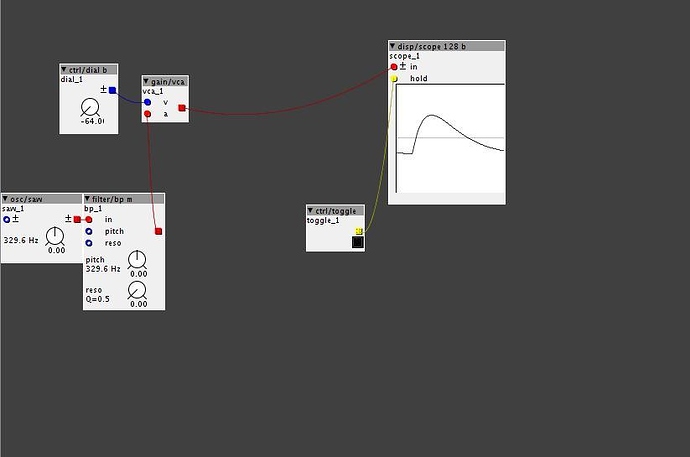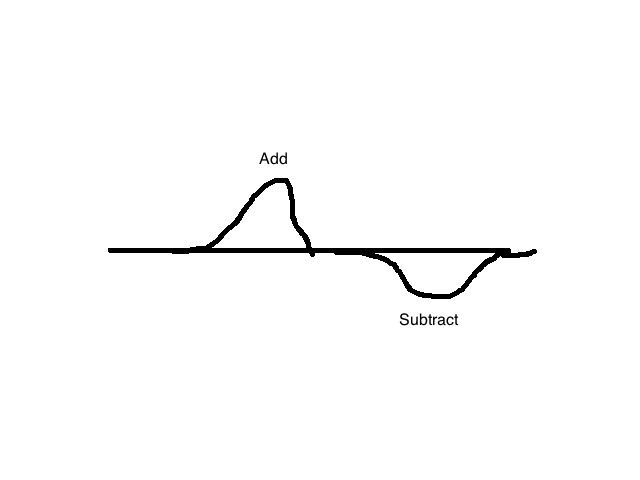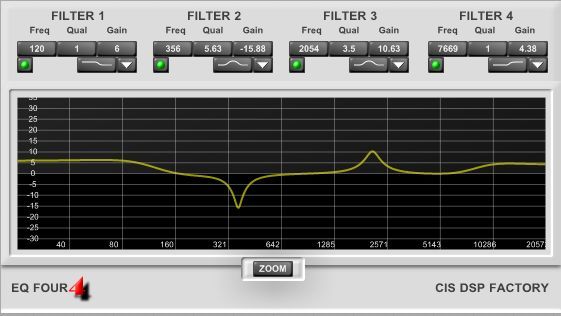I think ive got it this time, this one allows you to cut or boost specific frequencies, pick which frequencies to cut or boost, and adjust there amplitude, as well as the "bandwidth" i think. Check it out and let me know what you think, and definitely improve it wherever you can!Equalizer.axs (10.5 KB)
It is very cpu intensive, but i think if you paired it down to just single "bands" it would be a bit easier. It doesnt necessarily have to be a four band, since its just four identical circuits repeated and fed into a 4 channel mixer.
Each frequency has a dial that controlls whether it is "cut" or Boost" turning ti all the way left, will boost it, all the way right, will cut it. you can controll the depth of the cut with "bandwidth" and also selectively amplify or cut the overall effect via the mixer part.


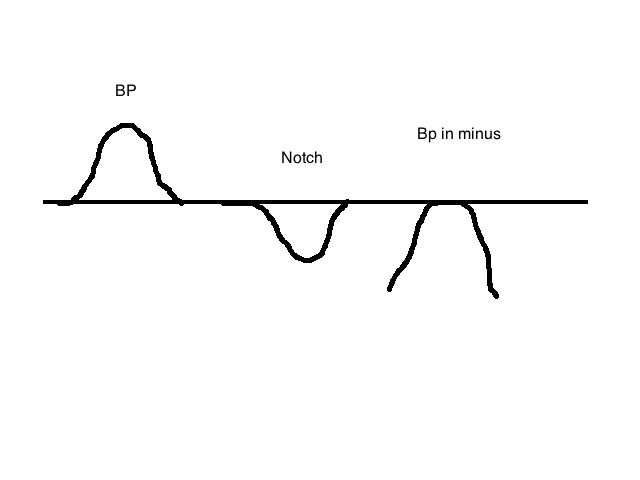
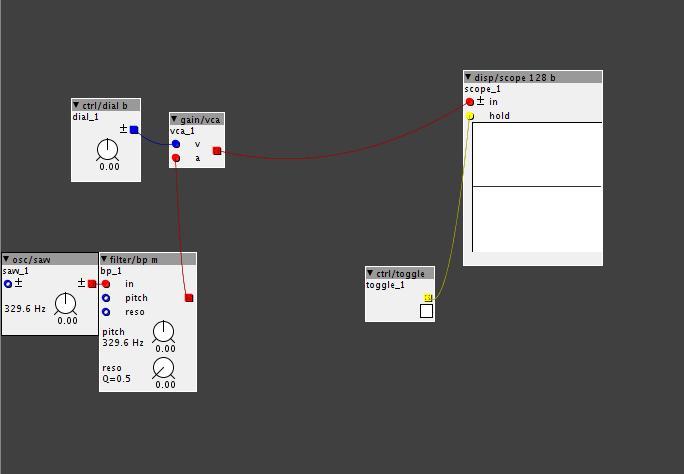 Here we have the bipolar Dial set to 0, no signal gets through, creating absolute attenuation.
Here we have the bipolar Dial set to 0, no signal gets through, creating absolute attenuation.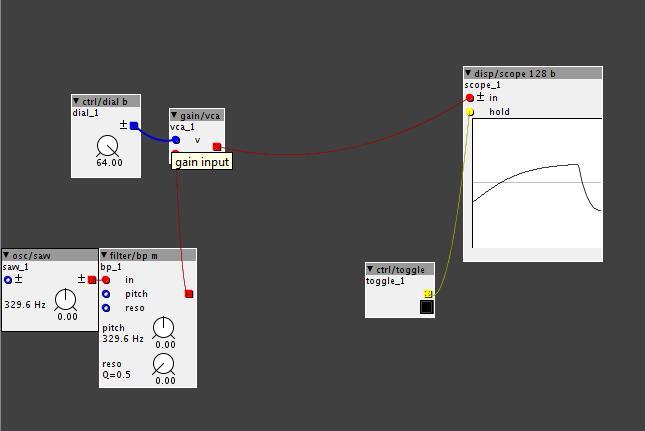 Hear, we have the dial set to +64, causing the wave form to be passed through the VCA with full amplitude, and no inversion.
Hear, we have the dial set to +64, causing the wave form to be passed through the VCA with full amplitude, and no inversion.